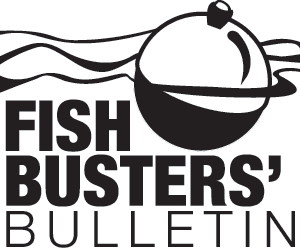Florida’s Lake Istokpoga Nursed to Lunker Locker

Lake Istokpoga’s 28,000 acres in Highlands County, just south of Sebring, is turning into a top lunker producer, as evidenced by the lake’s early prominence in the TrophyCatch angler-recognition program. Recent angler surveys estimated more than 1,000 bass over 8 pounds were caught there in less than a year.
Early in November, Don Hatcher documented, with all the required photos, an 8.8-pound bass that was 23 inches long to qualify for a Lunker Club (8-9.9 pounds) entry into the TrophyCatch program. His fish qualified him for not only a certificate and decal but also a free T-shirt from Bass King Clothing and a drawing for a $50 certificate from Bass Pro Shops, Dick’s Sporting Goods or Rapala, and the right to proclaim “My Trophy Swims in Florida!”
Lynn Ogle topped that fish a month later with a Trophy Club (10-12.9 pounds) entry that tipped the scales at 10.25 pounds and was 27 inches long. Besides bragging rights and the great feeling of knowing she’d released her trophy to grow and fight another day, she’ll receive a long-sleeve T-shirt from Bass King, and two $50 gift cards, plus a framable certificate and window decal.
The next day it was Charles Beatty pushing “oh so close,” as he said, to the Hall of Fame club, with a 12.4-pound, 26.5-inch beauty that he caught on an artificial lure. Beatty was thrilled that he qualified for the Trophy Club, but had the fish exceeded 13 pounds and been certified, he would have received a free ($500 value) fiberglass mount of his fish from New Wave Taxidermy and a commemorative display with a 3-D Fish Photo Replica of his fish mounted above a “Sportsman on Canvas” image of his catch. Hall of Famers also earn a custom Pro Line fishing rod with U.S. Reel bait caster, a Glen Lau DVD, $150 in gift certificates and entry into the Bass Hall of Fame at the Florida Bass Conservation Center.
The good news is the fish was released. With a few more ounces of pre-spawn fattening, it may still be a Hall of Fame inductee when the next lucky angler catches and releases it.
The best way to participate and to see what’s being caught where is to go to TrophyCatchFlorida.com. By registering in advance and learning the rules, you will know what equipment (camera, scales and measuring device) to have with you. Once you catch and release your qualifying bass (8-12.9 pounds), or call the FWC to certify a 13-pound plus hawg, you’ll just need to log in, upload the photos and spread the word to your network of friends. You don’t have to register in advance, but registering makes you eligible for a drawing for a Phoenix bass boat powered by Mercury.
Quality trophy bass fishing in Istokpoga is no fluke. The Florida Fish and Wildlife Conservation Commission (FWC) worked long and hard with local anglers and businesses to bring the lake back. In the early 1960s, water-level stabilization began limiting water fluctuations, resulting in excess vegetation and organic build-up. This is bad for habitat rejuvenation and flushing of Florida lakes.
These lakes historically experienced droughts that allowed muck to dry out and blow away, exposing sand that holds aquatic plants and provides bedding areas for bass and other sunfish. Subsequent high water levels would extend into the floodplain, allowing exceptionally strong year-classes of fish to develop.
Now, to ensure adequate water for irrigation, navigation and drinking water during droughts and to prevent flooding during high-water periods, mankind intervenes to preclude these extreme fluctuations. As a result, the FWC and other environmental partners must use alternate means to rejuvenate lakes.
From March through July 2001, Istokpoga benefitted by a drawdown and mechanical muck removal. A total of 1,308 acres were scraped from 21 miles of shoreline.
To maintain quality habitat, herbicide treatments and mechanical harvesting are used annually, targeting tussocks and plant monocultures to improve habitat. This reduces muck buildup and lessens the chance of plant die-offs, which cause fish kills.
By 2003, scraped areas had eelgrass, a highly desirable native aquatic plant. By 2009, quality fish habitat covered 33 percent of the lake. Twenty percent to 40 percent aquatic vegetation is ideal.
Stakeholders are actively engaged. In 1997, Lake Istokpoga became a fish management area, and the Lake Istokpoga Management Committee was formed at the request of Highlands County commissioners. The committee includes county and FWC staff and representatives from local user groups (e.g., fishermen, guides, fish camp owners, homeowners associations, Audubon). The committee discusses management ideas and provides input. In addition, Friends of Istokpoga, a nonprofit group, discusses management activities quarterly, including hydrilla treatment and habitat restoration plans.
The FWC has also used regulations to help create a trophy fishery. A 15- to 24-inch slot limit for bass and a three-fish daily bag limit (of which only one bass may be 24 inches or longer) have been successful. The FWC conducts annual angler surveys and supplements that information with nonlethal electrofishing surveys. The 2012 surveys documented the highest largemouth bass success rate (0.82 fish per hour) since the drawdown.
Lake Istokpoga is a stellar example of the FWC using a variety of management techniques and soliciting public input to provide an exceptional fishery. However, it isn’t close to being the only one. To see the top bass lakes for 2013 and get quarterly regional forecasts, visit MyFWC.com/Fishing and under “Freshwater Fishing” click “Fishing Sites and Forecasts.”

